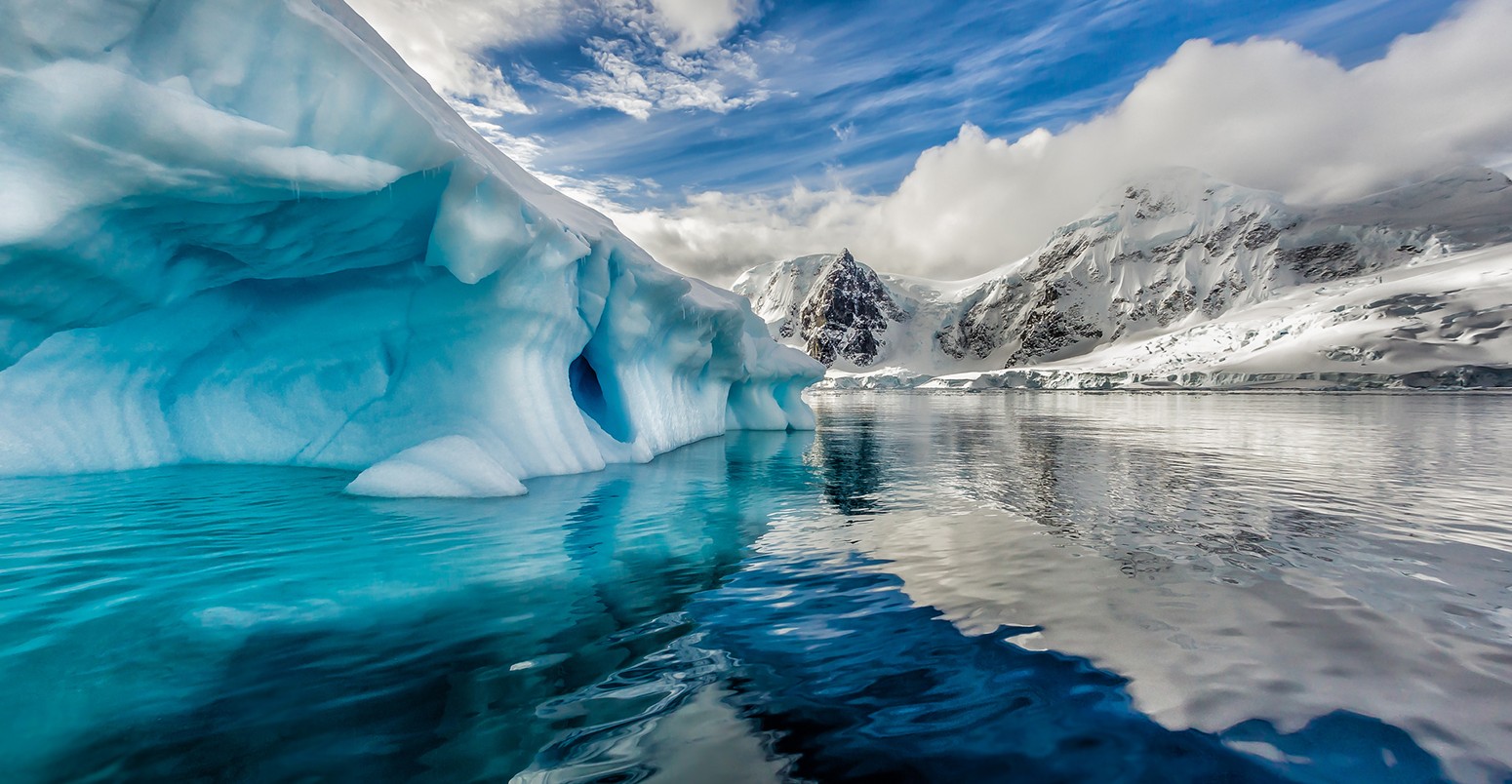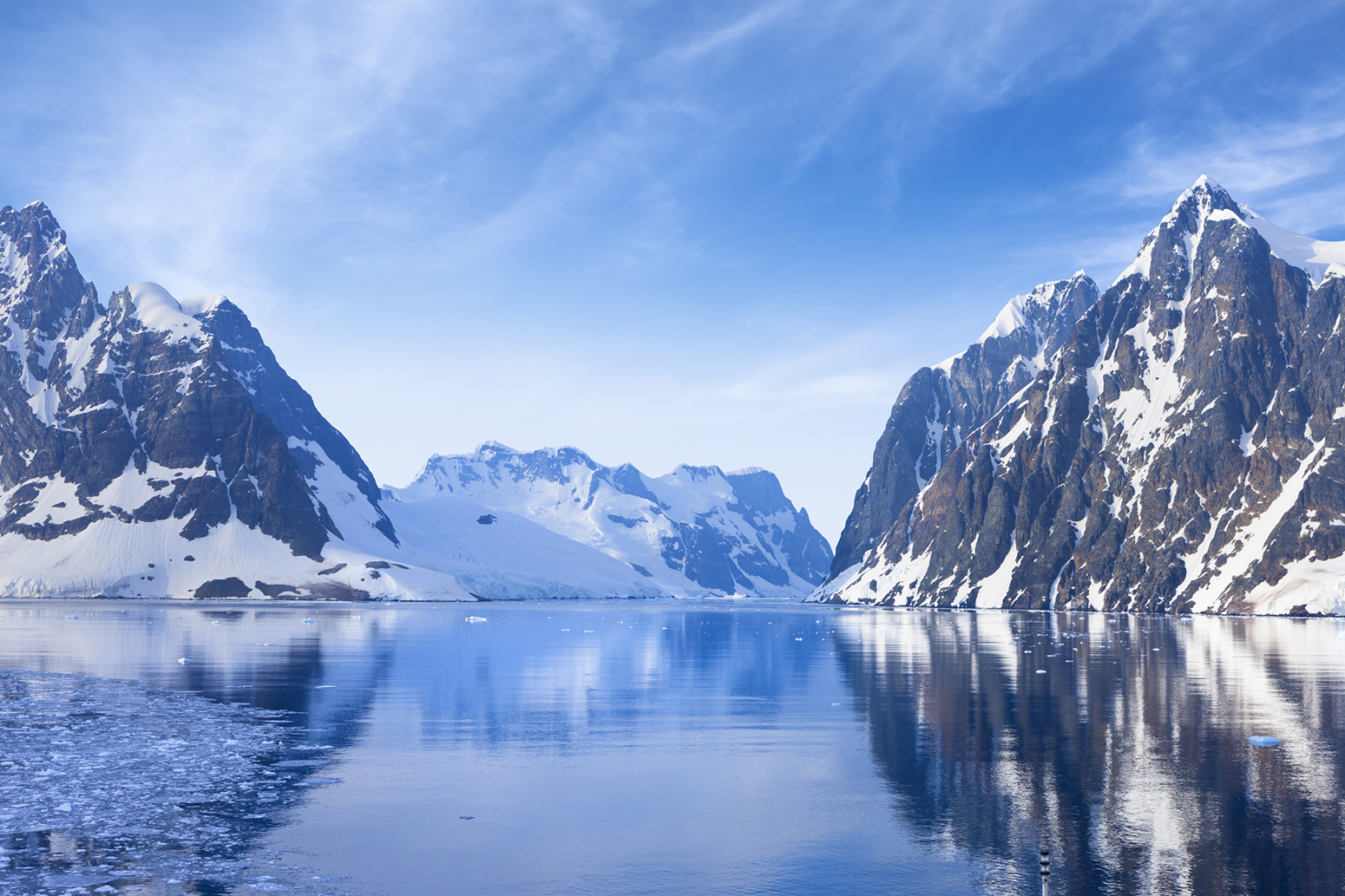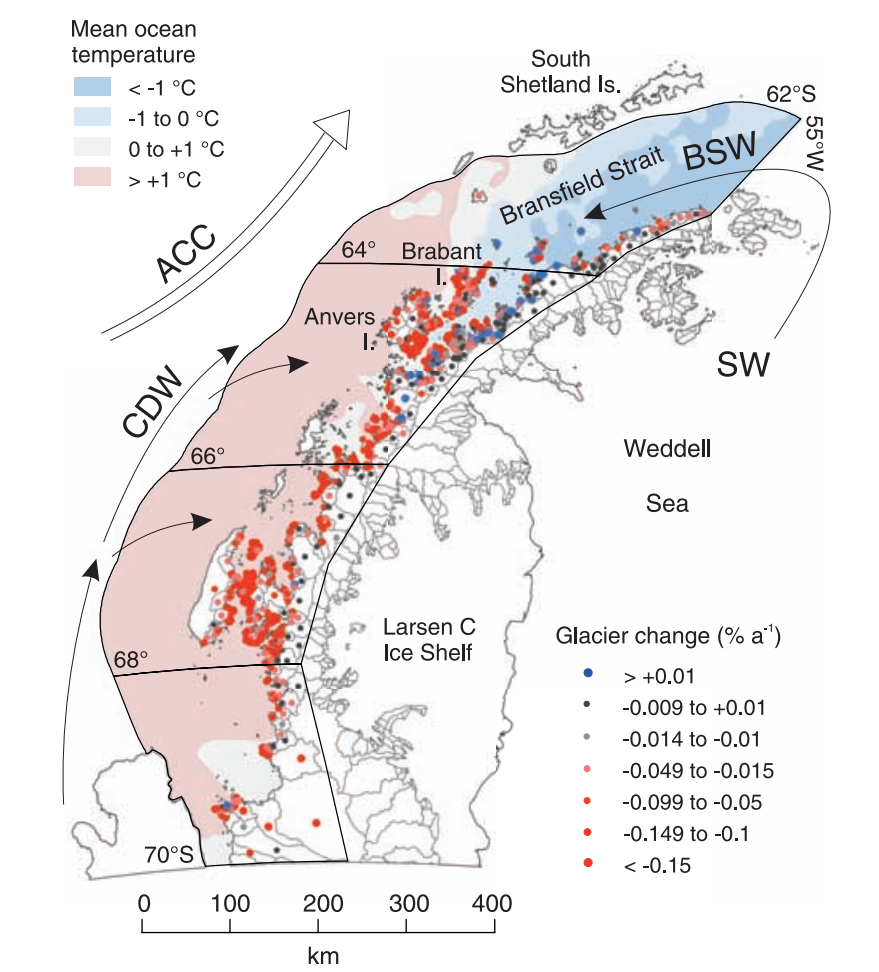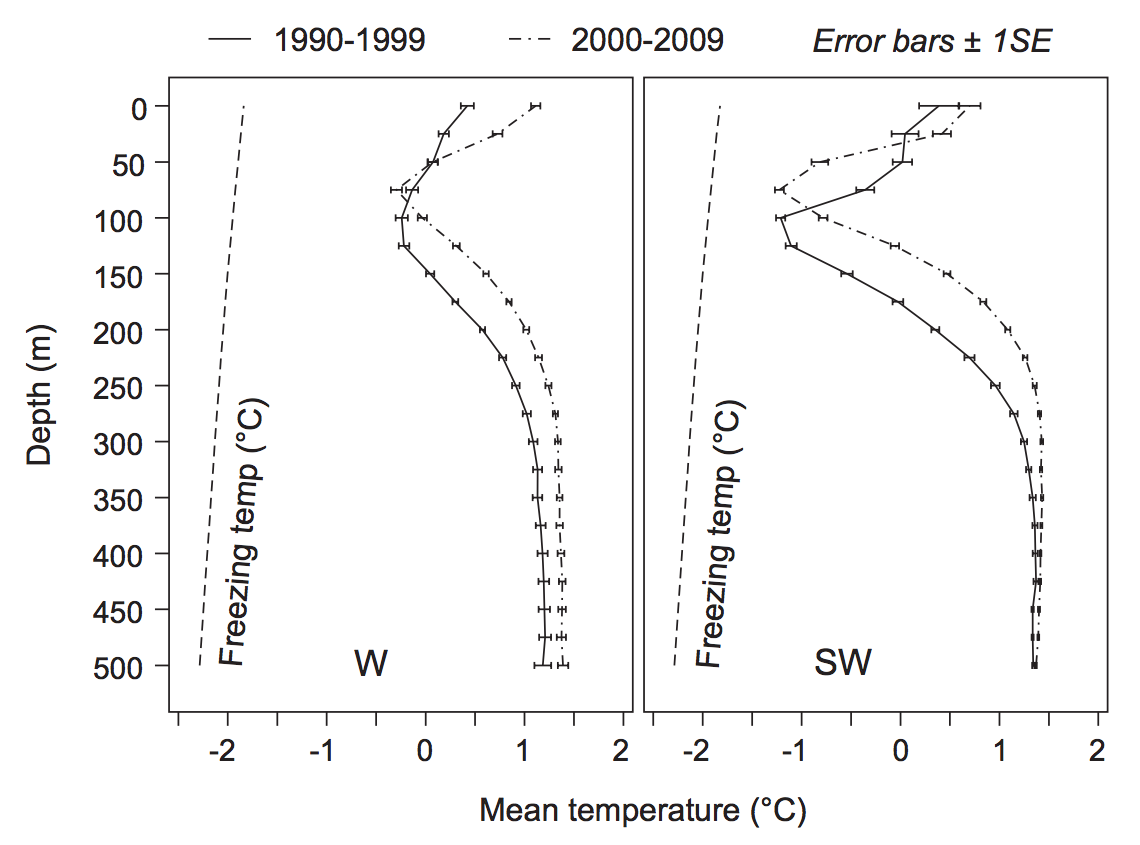
Warmer oceans driving Antarctic Peninsula glacier melt
Robert McSweeney
07.14.16The Antarctic Peninsula is a long, relatively narrow limb extending 800 miles out from West Antarctica, and is home to hundreds of glaciers.
These rivers of ice ooze their way down through the Peninsula’s rocky mountain range and into the ocean, powered by gravity and their own weight.
But of the 674 glaciers on the Peninsula’s western side, almost 90% are retreating. This happens when their ice melts faster than new snowfall can replenish it.
The prevailing theory has been that warming air are melting the glaciers. But a new study, just published in Science, finds that the main cause is actually rising ocean temperatures.
As the Peninsula’s glaciers are among the main contributors to sea level rise, knowing how and why they’re changing will help make predictions more accurate, the lead author tells Carbon Brief.
Glacier retreat
The Antarctic Peninsula is one of the fastest warming regions on Earth. Temperatures have risen by more than 3C over the past 50 years.
The warming atmosphere has caused some remarkable changes to the eastern side of the Peninsula. The Larsen ice shelf, a floating sheet of ice formed from glaciers spilling out onto the cold ocean, has lost two of its four sections in recent decades.
Larsen-A collapsed in 1995, followed by its neighbour, Larsen-B, in 2002. Rising air temperatures are also contributing to the thinning of Larsen-C, which is now at risk of collapse.
Over on the western side of the Peninsula, around 600 small glaciers of various shapes and sizes have also been melting. Scientists had thought that warming air temperatures were the likely cause of these retreating glaciers, says lead author Dr Alison Cook, a research fellow at the Durham University. She explains to Carbon Brief:
However, recent research suggests the glaciers are retreating even more quickly than can be explained by just the warming atmosphere.
Cook’s study finds that the main cause of glacier melt actually lies deep in the ocean – several hundred metres beneath the surface.

Snowy mountains in Lemaire Channel, Antarctic Peninsula. Photo: Grafissimo/Getty Images.
Warm water
The study looks at the key differences between the waters that surround the eastern and western sides of the Peninsula, says Cook. You can see this illustrated in the map below.
On the eastern side, the Weddell Sea contains cold, salty water. This “shelf water” (SW on the map) – so-called because it comes from the relatively shallow seas on Antarctica’s coast – keeps the eastern side chilled, but also creeps round to the northern tip of the Peninsula (blue shading). Here it combines with the similarly-cold Bransfield Strait Water (BSW).
The western side of the Peninsula has a coastline with the Bellingshausen Sea. This is home to relatively warm Circumpolar Deep Water (CDW), which is a few degrees less frigid than shelf water.
The CDW is carried around Antarctica by the Antarctic Circumpolar Current (ACC) at a depth of around 500-1000m. Although this is quite deep, the warm water can be transported towards the coast by swirling underwater currents known as ‘eddies’.
Here, the warm water melts the glacier fronts where they meet the ocean. This melting causes the glaciers to retreat, releasing water into the ocean where it adds to sea levels.
You can see this in the map below; the red dots indicate glaciers that are retreating. The blue dots, largely in the cooler waters at the tip of the Peninsula, show the stable glaciers that aren’t retreating. The connection between ocean temperatures and glacier melt is pretty clear, says Cook:

Average ocean temperatures (at a depth of 150m) and change in glacier size (in % per year) for 1945-2009 on the Antarctic Peninsula. The size and colour of the dots indicates glacier change – the larger, red dots showing the largest decrease, and the blue dots show stable glaciers that aren’t retreating. Ocean circulation and types of water mass are labelled as follows: Circumpolar Deep Water (CDW), Shelf Water (SW), Bransfield Strait Water (BSW), and Antarctic Circumpolar Current (ACC). Source: Cook et al. (2016)
Ocean warming
Not only are the waters on the Peninsula’s western coast relatively warm to start with, but they’re getting warmer, the study finds.
Comparing ocean temperature records for the Bellingshausen Sea for the 1990s and 2000s, the researchers find the temperatures are rising, and that warmer waters are moving to shallower depths – closer to the glaciers.
This warming coincides with an acceleration in glacier retreat from the late 1990s onwards, in all areas apart from the very northwest of the Peninsula, the paper says.
You can see the change in ocean temperatures in the charts below, off the western (left-hand chart) and southwestern (right-hand) parts of the Peninsula coast. They show the average temperature for the 1990s (solid line) and 2000s (dotted line) between the surface and a depth of 500m. Depths of 100-300m have seen the largest rise in temperature.

Average ocean temperatures during the 1990s (solid line) and 2000s (dashed line) for west (left-hand chart) and southwest (right-hand) regions off the Peninsula’s coast in the Bellingshausen Sea. The straight dotted line indicates the freezing temperature of water at different depths. Source: Cook et al. (2016)
The Antarctic Peninsula is one of the largest current contributors to sea level rise, says Cook, so pinpointing the reasons why their glaciers are changing is important:
Knowing the impact that a warming ocean is having on the Peninsula’s glaciers will help scientists improve predictions of sea level rise for the century ahead, she concludes.
Main image: Iceberg floats in Andord Bay on Graham Land, Antarctic in November. Photo: jocrebbin/Getty Images.
Cook, A. J., et al. (2016) Ocean forcing of glacier retreat in the western Antarctic Peninsula, Science, doi:10.1126/science.aae0017

